Located in Duyên Thái Commune in Hà Nội’s suburban district of Thường Tín, about 20km from downtown, the centuries-old craft village of Hạ Thái is famous for its lacquer products.
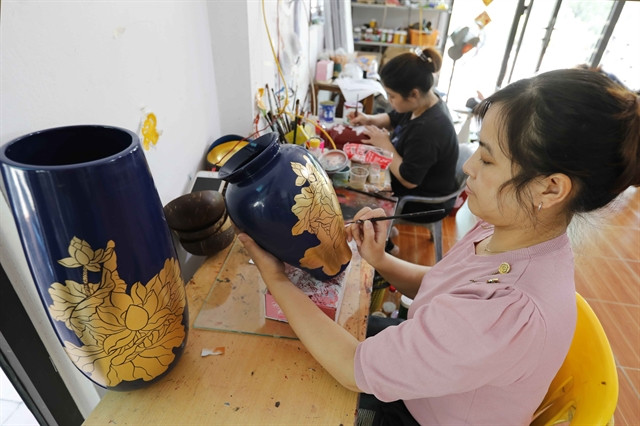 |
| Local craftswomen put the finishing touches to lacquer products in Hạ Thái Village. — VNA/VNS Photo Trần Việt |
Every year, the village has created millions of handicraft products to meet the demand of both domestic and foreign markets. Alongside a wide range of products made from natural materials such as wood, bamboo and rattan, the village also has created new gold- and silver-inlaid products made from ceramic, pottery, and composite.
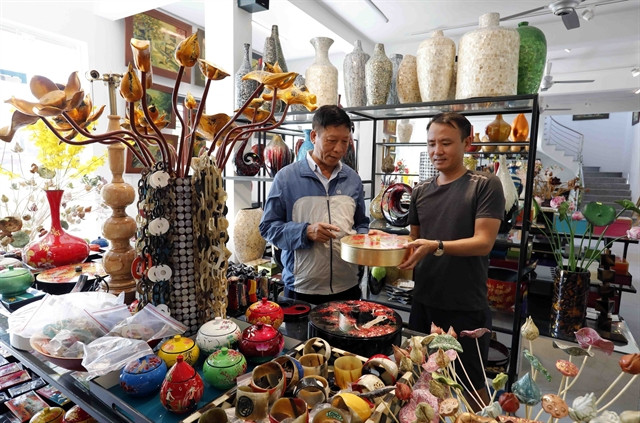 |
| Over the years, Hạ Thái has become a reputable address for domestic and international customers. — VNA/VNS Photo Trần Việt |
Currently, the village has about 40 workshops and 250 households with 4,000 people involved in different stages of the lacquer crafting process. Their products include worshipping objects, decoration items, bowls, plates, vases, trays and paintings.
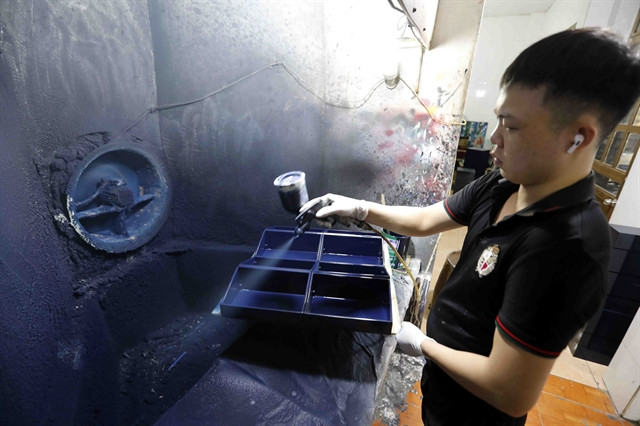 |
| A worker sprays paint on a product at the Thái Sơn Lacquer Company’s workshop in Hạ Thái Village. Spray painting is among dozens of steps of lacquer craft process. — VNA/VNS Photo Trần Việt |
Alongside inheriting traditional techniques from the forefathers, the village’s craftsmen also invented new methods, creating new colour palettes. They also master drawing on lacquer, creating vivid pictures.
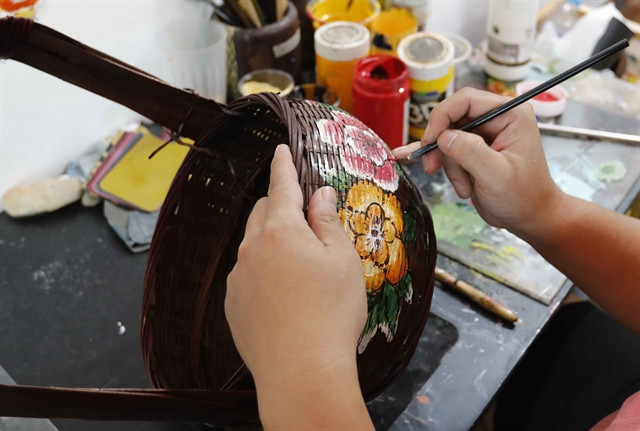 |
| A craftsman draws on a lacquer item at a workshop in Hạ Thái Village. — VNA/VNS Photo Trần Việt |
Over the years, Hạ Thái has become a reputable location for domestic and international customers. The Hạ Thái lacquer products have been exported to many countries such as the US, UK, France, Russia, Spain, Australia, Italy, Japan, South Korea.
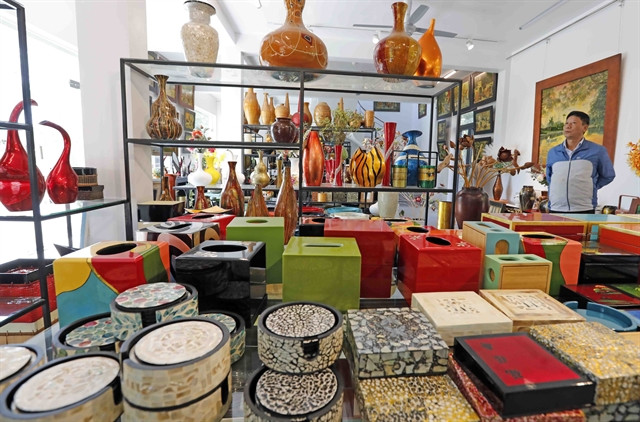 |
| Every year, craftsmen in Hạ Thái have created millions of products to meet the demand of domestic and foreign market. — VNA/VNS Photo Trần Việt |
The average revenue of every household is between VNĐ150-200 million (US$6,000-8,000). The village's average annual revenue is from VNĐ20-30 billion ($800,000-1.2 million), of which, 70 per cent is from export. — VNS